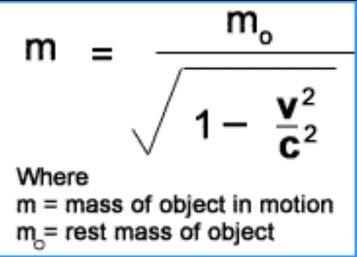Light speed has been a topic of fascination for centuries together. Light travels at a staggering speed of 299,792,458 m/s which is the highest achievable speed according to physics.
This speed is so high that you would be able to circumnavigate our globe approximately seven and a half times in one second. It is a universal constant according to Einsteins’ theory of relativity has a lot of interesting phenomena related to it like time dilation, etc.
So, let us look into what is light, history of calculating this speed, some fascinating phenomenon related to the light speed and can we exceed this speed.
Index
What is Light?
Light is electromagnetic radiation that shows properties of both waves and particles. Light is made up of massless particles called photons. Each wave has a wavelength or frequency. Light has its highest speed in a vacuum and slows down in a medium. The other main properties of light or electromagnetic radiation are intensity, polarization, phase, and orbital angular momentum.
Light in air is 1.0003 times slower than light in a vacuum, which slows it all the way down from 299,792,458 m/s to 299,702,547 m/s
History
Physicists started studying light with doubt as in whether light had any speed or it traveled instantaneously. This doubt was carried from the ancient Greek period to the 17th century with claims on both the possibilities.
The first quantitative calculation was done in the 17th century by Danish astronomer Øle Rømer.
Rømer was observing Io, the innermost moon of Jupiter. He observed that the periods of Io appeared to be shorter when the Earth was approaching Jupiter than when it was receding from it. With those observations, he came to the conclusion that light has a particular speed and he calculated that it would take 22 minutes for light to cover Earth’s diameter (It was much lower according to his calculations, they were corrected in future).
Later Huygens and Newton came very close to finding the speed of light. Huygens calculated the it to be 220,000 km/s and Newton mentioned that it would take light 7-8 minutes to reach Earth from Sun.
In the 19th century, the measurement was refined to 315,000 Km/s buy experiments done by French physicists Hippolyte Fizeau and Léon Foucault.
Then came electromagnetism and Maxwell’s equations and physicists found out that light is also an electromagnetic wave.
During the second half of the 20th century, increasingly accurate measurements using laser inferometers and cavity resonance techniques further refined estimates of the speed of light. In 1972, a group at the US National Bureau of Standards in Boulder, Colorado, used the laser inferometer technique to get the currently-recognized value of 299,792,458 m/s.
Speed of Light and Strange Phenomena
As mentioned above,the velocity of light have some strange things related to it, let us see those
Universal Constant
The light speed which generally denoted with c in physics is constant everywhere in the universe irrespective of the frame of reference according to Theory of Relativity. It means that an observer who is accelerating will observe the same speed as observed by an inertial person. Isn’t that crazy? Now, this crazy property gives rise to a few more strange properties.
Time Dilation
We know that the light speed is constant for any observer. So, suppose there is a spacecraft traveling at 50% light speed and light is emitted inside it, then for an observer inside it, light speed is c but for an observer outside the spacecraft, it will be 1.5c which is not possible according to relativity. Thus the concept of time dilation comes in, according to this, time slows down for anything moving at close to this humongous speed.
So, considering the above example 1.5 seconds for the outside observer will be 1 second for the inside observer. This might sound fictional but it is proved again and again.
Relativistic Mass Gain
The relativistic mass is the sum total quantity of energy in a body or system. According to the Theory of Relativity, as one approaches light speed, the relativistic mass of the body increases exponentially according to the following equation.

As we can see, if one reaches the speed c, the denominator in the right hand side of the equation becomes zero making the relativistic mass of object in motion infinite.
Can We Achieve Light Speed?
No, at least according to the current physics and technology, we cannot achieve it, not even a good percentage of that speed. The main problem being our mass and the infinite amount of energy to achieve and sustain that speed. Hopefully, we could reach a good percentage of this speed in the future.

